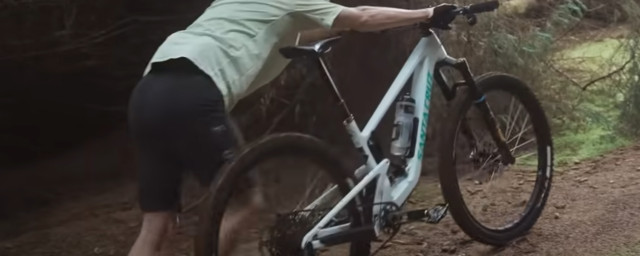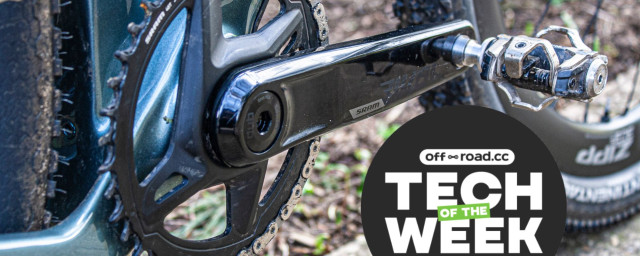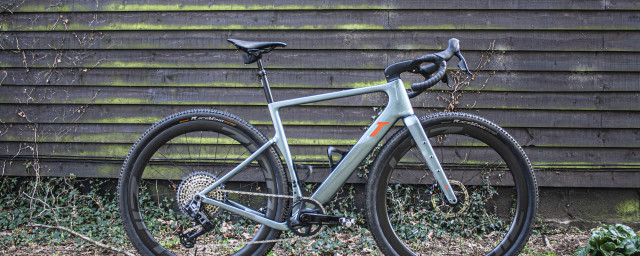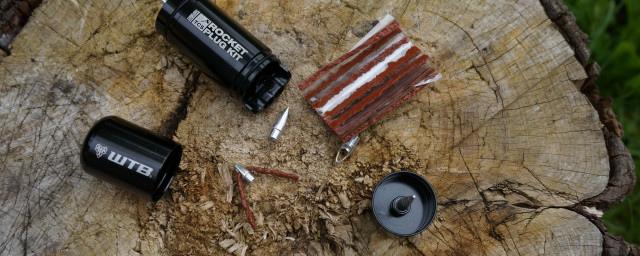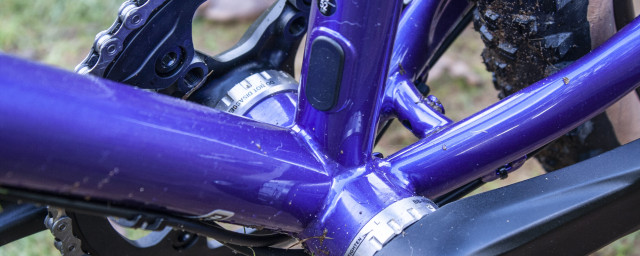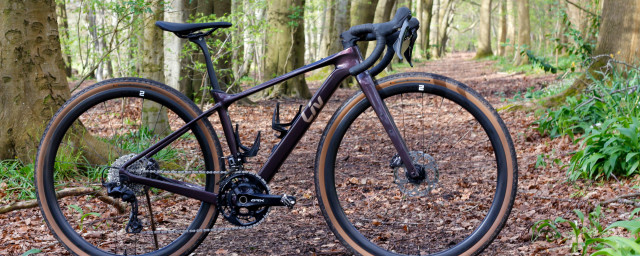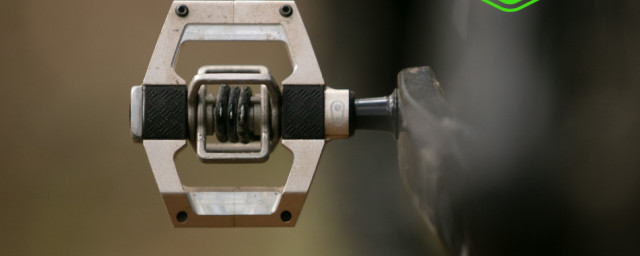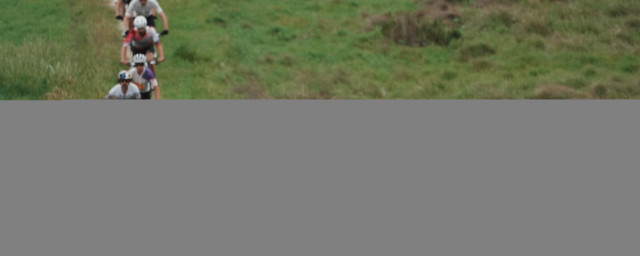As the northern hemisphere finds itself in the depths of winter, we've looked at ways to help keep you insulated and ready to tackle the trails. In this guide, we'll usher you through everything you need to know about winter mountain biking, including our favourite tips on what to wear not to mention worthy considerations to get you through the grim months.
Clothing is one of the most important aspects of winter mountain biking and you'll need to make use of the best technical outer layers and all the other winter season essentials to combat severe conditions such as cold, rain and mud. These non-negotiable choices won't guarantee a completely dry ride but it will make your winter riding season at least more bearable, if not fun.
Here’s everything you need to know about clothing, kit and a few helpful tips we think you’ll need this winter. We've lined up some review links for you and links to all our buyer's guides below each section so you can find and buy the best pieces of kit we've tested.
What to wear for winter mountain biking
Waterproof mountain bike jackets
There are two different types of jackets: waterproof and thermal insulating. Both are designed to keep the winter elements at bay. The best waterproof mountain bike jackets should be chosen to fend off as much water and mud from your torso keeping you dry and ultimately warm.
Due to their size and design, Jackets are often up there as one of the most expensive purchases you will make for mountain biking. Pricier jackets are warmer, breathable, stay waterproof for longer and have a fit and a cut that keeps you covered whilst still being able to move around on the bike. These are all things that will help regulate your temperature inside the jacket.
Once the rain starts pattering down, you'll need a waterproof jacket to keep you dry. Generally, when looking at waterproof jackets, you’ll want one that scores marks in the following categories: breathability, waterproofness, toughness and durability, while still offering a fit that works for your body shape - particularly on the bike.
Where breathability and waterproof ratings are concerned, the higher is often better. With figures such as 15,000mm (waterproof rating) and 10,000m2 (breathability) being high numbers. The best waterproof jackets often pack a layered construction and technology such as Gore-Tex. Taped seams are another feature that is high on the list, keeping water out at the points where the fabric has been sewn together during manufacturing.
Other note-worthy features such as waterproof zips on the primary closure and on the pockets are other considerations worth looking at. Water has a wicked way of finding weak spots through the material and without fully sealed seams and zips, you can expect your skin to get a dousing and any valuable items stashed in your pockets like a phone.
Soft collar and cuff materials will improve comfort where the jacket meets your skin. A hood is another feature that will add extra coverage when the weather closes in. Just ensure that it pulls up over whatever helmet you are likely to wear most often.
Reviews
- 7mesh Copilot Women's jacket review
- PNW Lander jacket review
- Fox Racing Ranger 3L jacket review
- Endura MT500 Waterproof Jacket II review
- Leatt DBX 5.0 All Mountain jacket review
Insulated mountain bike jackets
Waterproof jackets are great for keeping you dry and warm but do so only to a point. Once the mercury really starts to plummet and you are riding in temperatures around the freezing point, you will need a layer that packs more warmth to enable you to stay out on the bike for any serious amount of time.
Insulated thermal jackets won't keep you dry in a torrential downpour, but they will trap in valuable hard-earned warmth on those cold, crisp, blue-sky days. For muddy mountain bike adventures, you would be wise to consider the type of insulation that is used inside the garment. Down feather insulation is great at trapping your body warmth but is not as keen on being tossed into the washing machine as synthetic fibre insulation such as PrimaLoft.
A good insulating jacket designed specifically for mountain biking will often include vents that can help regulate the temperature inside the garment. You should be looking at a jacket that has large enough pockets to slot your mitts in to keep warm. The pockets need to feature an easy-to-use zip, so you can open them without removing your gloves. The zip pocket closure is essential to keep items safe whilst you are pedalling.
The best insulated jackets need to strike a balance between warmth and breathability. Too warm and you will overheat, too breathable and it won't be able to lock in the warmth.
Reviews
- Endura MT500 Freezing Point jacket review
- Endura GV500 Insulated jacket review
- 7Mesh Chilco Anorak review
- Leatt MTB Trail 3.0 jacket review
Trousers and winter shorts
Mountain bike leg wear follows many of the same rules as the outer garments to protect your top half. They must be well-fitting, hardwearing, offer ventilation and some pairs even offer waterproof protection. The best MTB pants or trousers will protect you from the rain. They will also fend off spray from the trails at the time it’s not falling from the sky.
Once the weather turns for the worst, it won't be long before you come to terms with the fact that full-legged trousers (or pants) are the most sensible solution for mountain biking. They provide a significant level of protection from trail debris and offer a covering of the skin to prevent jack frost from biting at your legs, making your ride uncomfortable.
The best mountain bike shorts are fine for the warmer months, and of course, they are available with waterproof properties, but for wet winter trails trousers is the pick for when it is absolutely torrential or staying warm during winter rides is the name of the game.
There are waterproof fabrics and softer, lighter options for shorts and trousers. There is a compromise with fully waterproof materials that will keep out the worst of the water but at the expense of breathability. The material is thicker and often constructed using multiple layers or a membrane. For example, a dual-layer fabric is a waterproof membrane bonded to the outer material.
The soft shell material pants will suit changeable conditions rather than a whole deluge. They are usually thinner and lighter. They often boast Durable Water Resistant (DWR) coating to combat lighter rain and the odd shower. The DWR coating won't last forever and will need to be topped up and reapplied after a few washes.
The fit of your trousers (or pants in the US) is vital. A tighter trouser fit will help hold your knee pads in place while reducing the amount of material that catches the wind. Alternatively, you don't want them so tight that you can't wear pads at all. Having stretch panels and articulated materials will help to achieve the desired fit especially when on the bike. We recommend that you try before you buy to ensure the desired fit.
Reviews
- Specialized Demo pant
- Specialized Trail Pants
- Royal Racing Apex Race Pants
- Fox Defend Fire Bib Pants
- Alpinestars Women's Stella Nevada Pant
- Madison Zenith 4-Season DWR trousers
- Polaris Bikewear AM500 TX Repel shorts
- Endura MT500 Waterproof Short II
- Endura women's MT500 Spray Short II
Base layers
The base layer is the foundation for keeping you warm. It is a simple and often overlooked part of the layering system. The best base layer for mountain biking will help keep you warm while regulating the temperature of the entire system without leaving you in a sweaty mess.
For winter, a long-sleeved base layer would be our go-to undergarment option. But they are available in a variety of sleeve lengths. They are also made from natural fibres such as merino wool or alternatively from synthetics.
The key focus is for the layer to sit as close to the skin as possible, trapping warm air while also having the harsh and unpleasant job of wicking sweat and moisture away from your skin. To do this effectively, it must be well-fitted and follow the contours of your body shape. You don't want any baggy gaps or bunching up of the base layer material for it to work at its best.
Synthetic base layers are very good at wicking moisture and yet still dry quickly. They tend to have plenty of stretches to ensure that they perfectly contour to your size and shape. Generally, they are cheaper, and the fibres and construction are more durable than the natural equivalent. On the downside, they will give off an odour once they have adsorbed your sweat and they are not the most sustainable product that won't biodegrade over time.
Natural fibre base layers are usually made from merino wool. The fibres are tiny and have an incredible warmth-to-weight ratio, even when the fibres are wet. They are comfortable to wear and feel lighter on your skin. The fibres will break down over time and as it comes from a sheep coat is completely sustainable. The major positive of merino wool is that the natural fibres are great odour control; even when worn for hours or even days, the garment won't stink. However, the fine fibres take longer to dry once wet, and they are not as hard-wearing compared to a synthetic base.
- What's best for cycling, synthetic or merino base layers?
- 10 pieces of essential mountain bike clothing for beginners
Reviews
- Altura Merino 50 Unisex Baselayer
- Madison Isoler Mesh Men's LS baselayer
- Morvelo Overland Dual SS Base Layer-Jersey
- Alpkit Koulin Trail Tee women's base layer
- Nukeproof Merino Long Sleeve Baselayer
Socks
There are two options here; waterproof or a regular sock that is thicker and designed for the winter season conditions. The choice of which to wear will depend upon the conditions of the day. But be warned making the wrong selection will lead to uncomfortably cold feet and toes.
Waterproof socks are designed to keep water away from your feet. They act as a barrier to keep feet dry. On the flip side, they are not the most breathable and won't let out any heat you might have accumulated during your ride. They do have their limitations, too. Waterproof socks should be combined with the best waterproof mountain bike trousers for the best results. This way it will reduce the chance of water pouring in through the opening at the top. Once the water does get in it isn't going to find its way out, and it will take longer to dry than you might think.
Merino material socks really are the business when it comes to winter months. The warmth, comfort and lack of horrible odours will transform the coldest mountain bike rides. Its warmth-to-weight ratio means you get warmer toes with thinner socks, less bulk and less chance of constricted feet.
Don't forget to ensure that your shoes have enough room inside for thicker or multiple layers. Wearing two pairs of socks doesn't necessarily mean warmer feet. It might cause you some severe discomfort and having your feet compressed will reduce the blood flow meaning colder feet than you might have bargained for.
Reviews
- Assos Trail Evo socks
- Dexshell Ultra Dri Sports Socks
- DexShell Waterproof Thermlite Socks
- Gore C3 Partial Gore Windstopper socks
Lycra
During the winter months, lycra is to cyclists what a neoprene wetsuit is to surfers. It will trap a layer of warm air against your skin. Thicker and longer lycra is an absolute godsend for the worst winter weather. Bib tights with a fleece lining really ramp the warmth. Bibs are an excellent option for winter to keep the muck out whilst staying perfectly in place even when soaking wet.
Bib tights or 3/4 length shorts or knickers can be expensive. Check out a pair of knee warmers if your budget doesn't stretch that far. These might be more commonly seen on our roadie friends but can be a good way to keep the joints warm if you don't usually pull on knee protection.
Reviews
- Gore C5 Opti Bib Shorts+ review
- Assos XC bib shorts review
- Morvelo Covert Stormshield Bib Shorts review
- Aussie Grit Apparel Flint Women's Bike Shorts Review
- PEdAL ED Tsuki Women's bib shorts review
- Morvelo Stealth Stormshield Knee Warmers
Shoes
Winter shoes can come in fully waterproof styles or thickly lined and super toastie. They are an expensive purchase though. You can expect winter-specific shoes to be ankle high as a full boot or with a neoprene cuff. They are considerably thicker with better thermal properties than regular kicks. The best mountain bike shoes for winter usually feature waterproof membrane technology like Gore-Tex, similar to what you'd find in waterproof hiking boots. These offer maximum warmth and waterproof protection, often at the detriment of weight and breathability. This is a compromise you will probably agree is worth making especially in the ice and snow. They are the ultimate purchase for those riders that treasure toastie toes.
Winter shoes might be too much of a stretch for your budget then you could consider waterproof overshoes. As their name suggests they are neoprene shoe covers that slip over regular mountain bike shoes and usually fasten with a zip and velcro at the rear. They won't last as long if your rides often consist of sustained sections you need to hike a bike.
They are a no-brainer, with overshoe options for flats or clipless shoes. They are not an ideal look for the fashion-conscious as they look a little odd but this is a case of function over fashion.
Reviews
- Fizik Terra Artica X2 shoe
- Bontrager JFW winter shoes
- Fizik Artica X5 SPD waterproof mountain bike shoe
- Shimano MW7 Waterproof GORE-TEX SPD shoes
- Spatz GravlR overshoes
Gloves
Windproof gloves are a good middle ground. The best winter cycling gloves protect your hands and digits from the cold while limiting bulkiness. Look for ones that don’t have too much padding on the palm of the hand to reduce bulk further.
The alternative is neoprene gloves that do away with trying to keep water out and instead concentrate on keeping your hands warm. They let water in and trap it between the glove and your skin with the idea that your hands warm this water and keep you comfortable.
Reviews
- 100% Hydromatic Brisker glove
- 100% Hydromatic glove
- Endura Strike II winter glove
- 100% Brisker Cold Weather women's glove
- Cube X-Shell Long Finger X NF gloves
- Showers Pass Crosspoint Waterproof Knit Gloves
- Dexshell Ultralite Gloves
Eyewear
Regardless of your mudguard choices, you will inevitably get a face full of crud. A good pair of glasses will protect you from the spray. The best glasses for mountain biking will feature wrap-around designed glasses that offer the best protection. Rimless designs will widen your field of view to include your periphery, too.
You can buy glasses with interchangeable lenses the versatility allows you to swap between a clear, a light enhancing or a sunglasses lens. The clear lens is crucial, allowing you to see as normal in low light conditions expected during the short winter days.
It’s important to get the fit right here and ensure they are neither too wide nor too narrow for reasons of comfort and security. You will want to ensure that they work with your helmet design, too. We recommend you test them out before you part with your hard-earned cash.
Fogging up is a common issue, but some manufacturers offer vented lenses and antifog coating which will go some way to alleviating the problem. Usually, the key to keeping your eyewear fog free is to keep moving.
Goggles offer the ultimate protection from flying mud and water for a full-face helmet used for downhill or enduro mountain biking. Goggles have interchangeable lenses and have neat features like rollers or tear-offs to ensure a clear view of the trail. Their only real drawback is they are prone to fogging if you stop and this issue is compounded further in damp conditions or when you perspire.
Reviews
- Melon Optics Alleycat glasses
- Kali Protectives Trinity goggles
- Smith Optics Fuel V.2 goggle
- Madison Code Breaker Glasses Three-Lens Pack
- Leatt Velocity 6.5 goggles
- 100% Accuri MTB goggles
- Tifosi Optics Crit Crystal Fototech glasses
- Smith Optics Wildcat glasses
Packs
Packs that are suitable for mountain biking come in a multitude of different designs. From larger volume backpacks with removable back protectors to smaller hip packs also known as 'bum bags' or 'fanny packs' for the bare essentials. All sorts of packs can be loaded onto your bike to save you from shouldering the burden. Frame bags, handlebar bags and even a vast selection of saddle bags, some that can squeeze in a spare inner tube to the biggest that you could almost live out of for a few days. The best saddle bags for mountain biking are now available to work with dropper posts and double up as a tremendous rear mudguard.
The best mountain bike backpacks are useful to stache those extra spares, layers and food that all go a long way to make winter mountain biking a little bit more bearable. Having to stop whilst your unlucky riding buddy fixies a mechanical will whisk away any warm that you have mustered during your ride. You will be glad to pull on an extra layer, a dry hat, and make a warm brew for the most prepared. When you are standing on a freezing hillside waiting for your mate, you’ll be glad of whatever goodies you’ve stuffed into your pack. Most riding bags have a reservoir for water which will stay cleaner than a bottle in a cage once the mud starts to fly.
Some backpacks have a handy cover that will fend off the worst trail spray from your rear wheel and extend the periods between each time you are forced to wash your bag. We recommend placing all valuables and electronic equipment that needs to stay dry into a small roll-top dry bag inside your riding pack. Dry bags come in various sizes and are relatively affordable compared to replacing a sodden mobile phone.
Reviews
- Deuter Attack 16 backpack
- Restrap Large Bar Bag
- PNW Components Satellite Saddle Bag
- Apidura Backcountry Hip Pack
- Deuter Flyt 14 back pack
- EVOC FR Trail E-Ride 20 backpack
- Apidura Racing Hydration Vest
- Ergon BA Hip Pack
- Wildcat Double Ended Drybag
- Evoc Trail Pro 16l hydration pack
- Straight Cut Dropper Seatpost saddlebag
Winter mountain biking: tips and hacks
Neck Tube
A neck warming tube or Buff is a seamless tube of stretchy material and is a jack of all trades - neck warmer, hat, ear warmer, sweatband and even heard of stories where it has been used as a bandage in a crisis. They will take up next to no room in your pack and prevent chills down your collar.
Warm refreshments
We recommend you always carry enough money for a warm drink. There is nothing like warming through with a hot drink and a healthy dose of caffeine for a boost. It will almost always give you a smile.
Alternatively, you could always pack a brew kit to make a hot drink somewhere when you are out. It will take a little bit of extra preparation before you leave for your ride, but you will really appreciate it and your riding mates will be forever in your debt.
You will need a stove kit and fuel to warm up the water and mug. We would pick an enamel or plastic vestibule for this. Your best china from home is not going to last long when it's been thrown into your pack, and you're hurtling down a technical descent.
Don't forget to pack your favourite pick for a warm drink; coffee, tea, and hot chocolate. Most will need the associated condiments like milk, sugar and of course water.
How to get your bike ready for winter mountain biking
Not only you, the rider that will suffer at the mercy of the cold, rainy and muddy trails. Your bike is going to take a hammering. An obvious one to many will be to swap out fast-rolling summer tyres for rubber better suited to the harsh conditions you are likely to face in the northern hemisphere winter, but that comes at quite a cost. Don't fret; it is not all just the big bucks mods. Your bike will benefit from a few relatively cheap modifications like a front mudguard that will protect your fork seals as well as your face.
Mudguards
Even if the rain isn't falling from the sky, the trails will be saturated by now, and you are likely to be almost as wet and caked in mud from the spray flicking off your mountain bike tyres. At least you should strap on a front mudguard if not a pair. The front mudguard will keep your forks running smoother for longer by protecting the seals. A mudguard on your forks will also allow you to be able to see still which direction the trail is heading and you will more likely be able to see obstacles without a face full of muck.
Mudguards are relatively cheap to buy and only take a few minutes to install. Once fitted it is a good idea to ensure the wheels still spin freely without any interference from the mudguards.
Reviews
- RRP ProGuard front mudguard
- Slicy Custom XC – AM mudguard
- Crud Catcher XL Front Fender
- Mudhugger Rear 29er Mudguard
- Mudhugger FR front mudguard
Tyres
Your choice of rubber is the only thing that connects your bike to the trail. Fitting tyres that are better suited to the conditions you are likely to face is a simple and arguably the most significant modification you can make to your mountain bike. The best mountain bike tyres will give you a better feel for the ground and a marked improvement in grip and confidence.
Tyres designed for the worst winter slop will not roll as fast and drag on harder surfaces like the road, but once off the tarmac, they will shine. They usually have a softer compound for grip and have a taller more spaced tread pattern to dig through the surface layer of mud and find purchase beneath. The wider spacing knobs will allow the tyre to clear the mud to prevent it from just turning into almost a slick tyre, but you will need to get them rolling to allow them to clear effectively.
Reviews
- Maxxis Shorty Gen 2 tyre
- Maxxis Dissector 3C Maxx Terra EXO+ tyre
- WTB Verdict Wet 2.5 TCS Light/High Grip + Slash Guard tyre
- Maxxis Shorty 3C Maxx Terra EXO TR tyre
- WTB Verdict 2.5 TCS Tough tyre
Lights
With the winter months adorned with fewer daylight hours a good set of lights are a must to make the most of mid-week after-work mountain bike adventures. The best mountain bike lights offer modern LEDs that burn super bright with beam patterns that have been designed to complement mountain bike trails. A bar-mounted light is good at offering a wider illuminated trail, but you will struggle to see far enough ahead when on tight and twisty trails. Combining a helmet-mounted light with a light on your bar will give you almost as much vision as in the daytime.
Brighter isn't always the best. You don't want lights that are so focused that they cast shadows. A wide wash of light offers a rider a better periphery vision, less harsh contrast, and reduced shadows.
Burn time is another primary consideration. The last thing you want is to be stranded on a mountain in the dark with no way of finding your way down. Modern lights usually have a few different settings to preserve valuable juice on the fire road climbs so you can boost the lumens right up for the technical sections of the trail.
If your ride uses sections of the carriageway, you will also need a well-placed rear light to warn other road users of your presence for your own safety.
Reviews
- USE Exposure Zenith MK2 front light
- USE Exposure Sixpack MK12 SYNC MK4 front light
- Moon Canopus front light
- Magicshine Monteer 8000 Galaxy front light
- Knog PWR Mountain Kit light
- Gloworm Alpha front light
- Gloworm XSV front light
- USE Exposure Diablo MK10 front light
Winter mountain biking: cleaning and maintenance
The winter conditions will take their toll on your bike. Bearings, suspension seals, brake pads and drivetrains are all going to suffer. Keeping on top of your bike's cleaning and maintenance will mean it stays on the trail and out of the service stand.
Make sure you clean your bike after every muddy winter ride and inspect the parts that are susceptible to wear. Appling chain lube that is designed to work in winter conditions will keep your drivetrain in good order and not simply wash away at the first sign of a puddle. Several products available will help protect your bike and its components once it is gleaming again to prolong its life and save you a few quid, too.



























